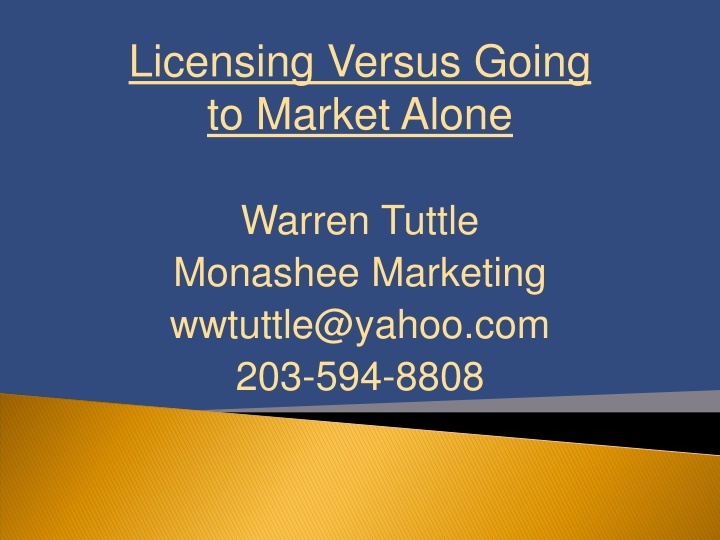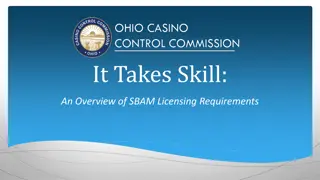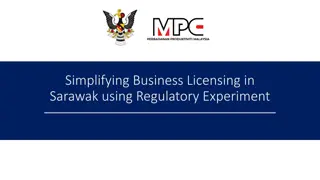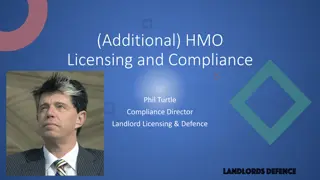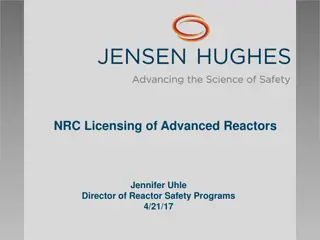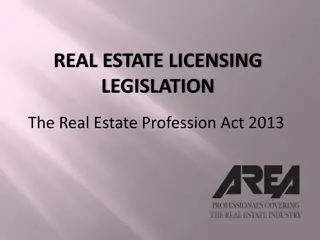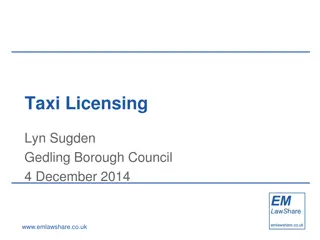Licensing vs. Going to Market Alone - Which Is Best for Your Business?
Deciding between licensing your product and going to market alone involves important considerations. Explore key factors such as leveraging IP, negotiating royalties, industry guidelines, and more to make an informed choice. Learn how to research your industry, seek inventor-friendly companies, and when to opt for professional services. Understand the challenges of limited resources, industry standards, creative strengths, and when larger companies might offer advantages. Discover ways to enhance product development, expand patent opportunities, and establish a strong brand for future licensing prospects.
Download Presentation

Please find below an Image/Link to download the presentation.
The content on the website is provided AS IS for your information and personal use only. It may not be sold, licensed, or shared on other websites without obtaining consent from the author.If you encounter any issues during the download, it is possible that the publisher has removed the file from their server.
You are allowed to download the files provided on this website for personal or commercial use, subject to the condition that they are used lawfully. All files are the property of their respective owners.
The content on the website is provided AS IS for your information and personal use only. It may not be sold, licensed, or shared on other websites without obtaining consent from the author.
E N D
Presentation Transcript
Licensing Versus Going to Market Alone Warren Tuttle Monashee Marketing wwtuttle@yahoo.com 203-594-8808
Lifetime Brands 32 Brands including Farberware, Kitchen Aid, Cuisinart, Pedrini, Towle, Mikasa, Pfaltzgraf 30,000 products 9 Divisions
Taking your product to market through others Leveraging valuable IP Making a royalty on each unit sold Establishing a fair royalty amount ($ or %) Negotiating exclusive or non-exclusive terms Setting annual quantity minimums Securing a signing advance Determining length of licensing agreement
Taking a professional approach Understanding industry licensing guidelines Vetting product at retail Develop working prototype proving function CADs and photos Researching and filing for a patent Creating a Sell Sheet NDAs
Research your industry Retail store and catalog shopping Internet Searches Trade Shows Industry Trade Magazines Industry Contacts Determine company with broadest distribution and reach Seek Inventor Friendly companies
When personal resources are limited When industry standards are stacked against you the plight of the single sku vendor When you are working on multiple projects When running a company is not for you When your personal creative and business strengths lie elsewhere When a larger company can simply do it better than you
Product development services Expanding patent opportunities Branding Established distribution Expanded product assortment Acknowledging Inventor Platform for future licensing opportunities
Same initial development process (idea, prototype, patent search, marketplace vetting) What are industry standards and nuances? What are retailer requirements for single item vendors? What is price point of the product? High margin and low volume opportunities. Can you earn a windfall profit early on? Can you build and sell the business?
1) Early Development Costs 2) Tooling 3) Manufacturing 4) Inventory 5) Shipping 6) Warehousing 7) Disbursement 8) Billing 9) Collection
Financial Resourcesaccess to $ Time quit your day job? Passion are you a visionary, or simply crazy? Consumer Research sketchy Industry challenges within each Product ability to manufacture Margins high or low volume Personal Goals quality of life
